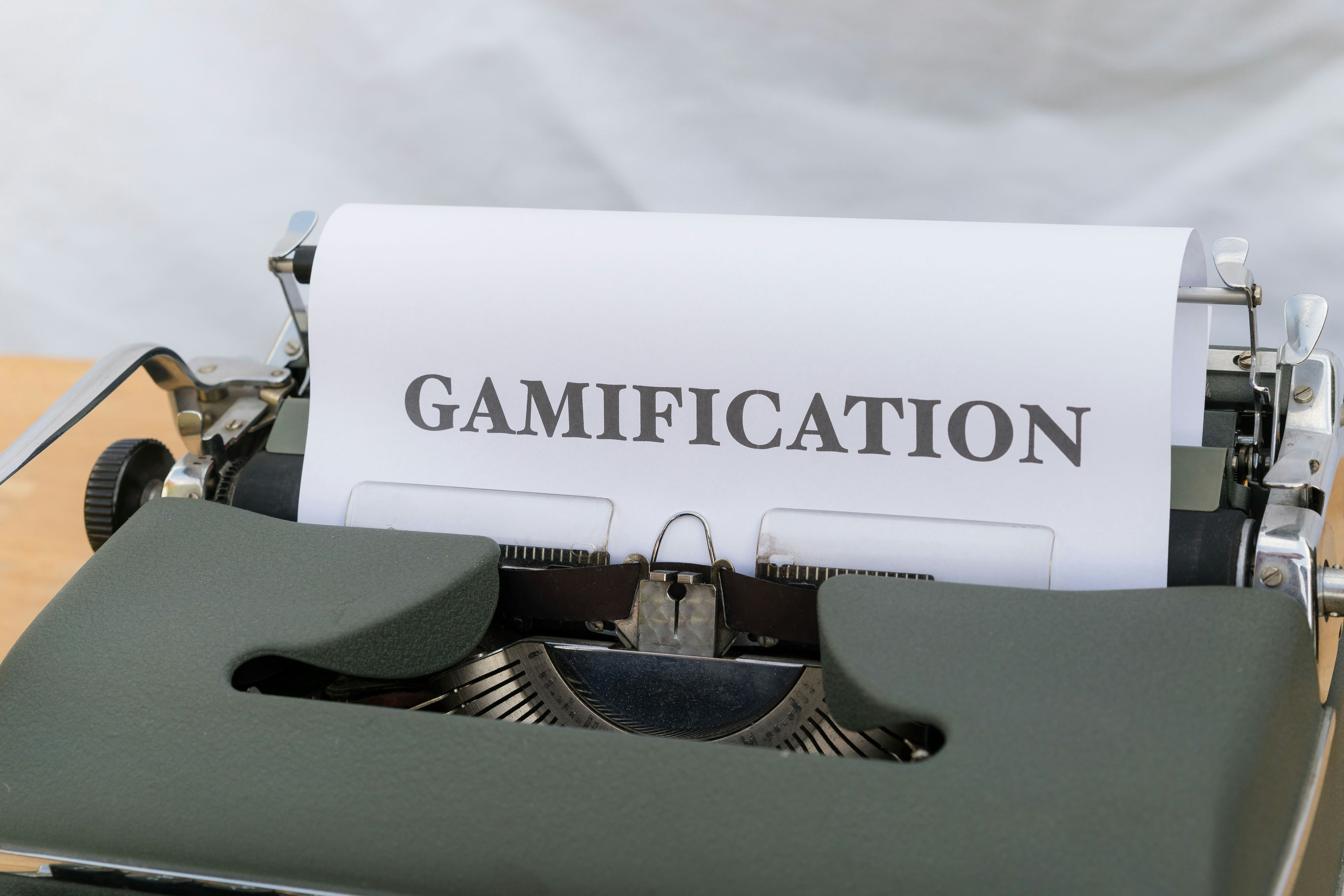Drive Local Engagement with Gamification: Small Business Growth Hacks
In today's bustling economy, small businesses often grapple with the daunting challenges of engaging their local communities while trying to grow. However, what if I told you that the secret to community engagement lies within the power of gamification? By innovatively turning typical challenges into friendly competitions, small businesses can foster not just engagement, but genuine connections with their customers. As we dive into this exploration, you’ll discover how gamification can ignite local interest and spur growth—transforming your business landscape into a thriving hub of activity and loyalty.
Understanding Gamification: A Primer for Small Businesses

Before delving into the specifics of how gamification can drive local engagement, it's vital to grasp what gamification actually means. Simply put, gamification is the application of game-like elements in non-gaming contexts—think rewards, challenges, and leaderboards. This technique leverages natural human behavior, integrating playful activities into your marketing strategies, which can increase participation and foster a sense of community.
Gamification works effectively because it taps into our innate desire for competition, achievement, and social interaction. Small businesses can utilize these psychological motivators to create engaging experiences that not only captivate the audience but also encourage repeat visits and customer loyalty. For instance, you can set up contests, loyalty programs, or even community events that incorporate elements of fun and competition.
The Benefits of Gamification for Small Businesses

The advantages of implementing gamification strategies in small retail ventures cannot be overstated. Here are some clear benefits to consider:
-
Increased Customer Engagement: Gamification compels customers to interact with your brand more frequently. By introducing challenges or rewards, you encourage them to visit your business more often than they normally would.
-
Enhanced Customer Loyalty: By rewarding customers for their engagement, you not only foster repeat business but also cultivate lasting loyalty. Customers who feel recognized and valued are more likely to return.
-
Word-of-Mouth Promotion: Engaged customers become brand advocates. They’re eager to share their experiences with friends and family, effectively promoting your business without any additional marketing costs.
-
Market Differentiation: In a competitive landscape, gamification can set your business apart. Offering unique experiences through playful engagement can draw customers away from competitors who stick to traditional marketing approaches.
-
Rich Data Insights: By tracking participation in your gamified initiatives, you'll gain valuable insights into customer preferences, behaviors, and trends that can inform your overall business strategy.
Transforming Traditional Challenges into Engaging Competitions

So, how can you convert conventional challenges into exciting competitions that resonate with your local community? Here are some practical strategies to get started:
1. Launch a Community Challenge

Encourage your community to participate in a challenge that aligns with the values of your business. For example, a local café could challenge its customers to drink a certain number of smoothies in a month. Participants would track their progress through an app or a social media hashtag. The winner could receive a free meal or a special discount, enticing others to join the fun.
2. Create a Loyalty Program with Extra Incentives

Traditional loyalty programs can gain a gamified twist by adding levels or challenges. For instance, award badges for various milestones, such as a certain number of visits or dollars spent. Customers would then strive to collect badges, enhancing their connection feels to your brand. You might even incentivize the sharing of their achievements on social media—an excellent way to increase visibility.
3. Host Local Events with Leaderboards

Consider hosting local events that foster competition, like bake sales, trivia nights, or outdoor fitness contests. Incorporate leaderboards and tangible prizes that create excitement and drive attendance. This not only brings people together, but it enhances community spirit, as participants share achievements and experiences with one another.
For example, if you own a fitness studio, turn your workout classes into a competitive event. Track attendance and performance, and reward customers who challenge themselves by attending a certain number of classes. You can showcase their rankings on a public leaderboard, fostering healthy competition among your clients.
4. Collaborative Community Engagement

Partner with other small businesses in your area to create a larger gamification initiative. This could involve a local scavenger hunt where participants must visit each business to complete challenges and earn rewards. This kind of collaboration fosters connections between businesses and can significantly broaden your audience reach.
Best Practices for Implementing Gamification

As you embark on your gamification journey, it’s crucial to keep certain best practices in mind to ensure effective implementation:
-
Understand Your Audience: Tailor your gamification strategies based on what resonates with your target demographic. Conduct surveys or engage with your community to gather insights about their interests.
-
Keep It Simple: Ensure that the rules of your games or challenges are easy to understand. Complicated mechanics can deter participation instead of promoting it.
-
Integrate Feedback Loops: Create systems for feedback and improvement. Allow participants to voice their opinions on how fun or engaging the gamification elements are and be open to making adjustments.
-
Promote Inclusivity: Ensure that everyone can participate, regardless of age, skill level, or background. The goal is to foster a sense of community, so create various avenues of participation to accommodate all.
-
Celebrate Achievements: Make an effort to recognize and celebrate the success of participants. Whether through social media shout-outs or in-store acknowledgments, showing appreciation can fuel further engagement.
Real-World Examples of Gamification in Action

To illustrate the effectiveness of gamification in small business contexts, let’s explore a few successful examples.
-
Starbucks' Rewards Program: Starbucks employs gamification through its rewards program, where loyal customers earn stars for every purchase. As they accumulate stars, they unlock various rewards, including free drinks and exclusive offers. This not only encourages repeat purchases but turns customers into avid fans of the brand.
-
Nike+: Nike has transformed the fitness landscape through their Nike+ app, which allows users to track their workouts and compete in challenges. This social aspect keeps users motivated to improve, and the ability to share achievements using social platforms has created a sense of community around fitness.
-
Duolingo: The language-learning platform uses gamified lessons with points, leaderboards, and daily challenges. This format appeals to users, promoting consistent learning habits while fostering a competitive spirit among individuals.
Incorporating Technology in Gamification

Innovative tech can further enhance your gamification efforts. Consider using mobile apps, social media, or QR codes to make participation easier and more engaging. For example, by utilizing location-based services, you can set up challenges that involve them visiting various local landmarks or your business itself.
Moreover, integrating gamification into your existing digital platforms can streamline the user experience. For small businesses, utilizing software platforms that are designed for gamified interactions can help in organizing events, managing leaderboards, and tracking user progress.
Potential Challenges and How to Overcome Them

While gamification can yield remarkable results, it's essential to anticipate potential pitfalls:
-
Engagement Levels: If initial engagement is low, analyze feedback to identify shortcomings. Consider redesigning the challenge or offering more attractive rewards to drive participation.
-
Overcoming Resistance to Change: Not everyone may respond positively to gamified tactics at first. Educate your audience about the benefits of participation and create excitement around the initiative.
-
Sustaining Engagement: Once you initiate a gamification strategy, the challenge is to continually engage your audience. Regularly introduce new challenges, rewards, or refresh existing programs to keep things exciting.
Final Thoughts: Gamification as a Gateway to Community Engagement

Gamification stands as an incredibly potent tool for small businesses striving to enhance local engagement. By transforming challenges into community competitions, businesses can establish meaningful connections with their audiences while fostering loyalty and excitement.
The beauty of this approach lies in its versatility—whether it’s through loyalty programs, community competitions, or collaborative events, the opportunities are endless. By taking those first steps into the playful realm of gamification, you can propel your business growth while simultaneously contributing to the vibrant fabric of your local community.
Start experimenting with gamified strategies today and witness how the energy and interaction foster growth not just for your business, but for the entire community!
Explore More

To further explore growth strategies and unlock potential for your local business, check out our insights on transforming local parks into marketplaces and crafting compelling origin stories.



